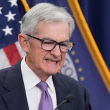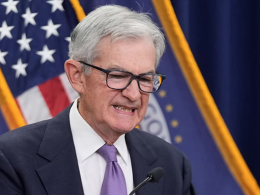by Brian S. Wesbury – Chief Economist & Robert Stein, CFA – Deputy Chief Economist, First Trust Portfolios
Fifteen years ago, in 2008, the Federal Reserve started an experiment in monetary policy, switching from a “scarce reserve” system to one based on “abundant reserves.” This switch has created massive problems that are hitting not just the private banking system but the Fed itself.
During the 2008 Financial Panic, the Fed argued that the financial system was so frail it required a bigger Fed balance sheet. Afterwards, the Fed said the non-inflationary growth from 2009 - 2019 showed the system worked. During COVID, the Fed doubled down with even more Quantitative Easing (QE). The result? Inflation at a forty-year high and government agencies bailing out banks and depositors.
More importantly, the Fed apparently hadn’t anticipated what would happen to its own financial situation when it couldn’t hold interest rates at artificially low levels anymore. The Fed’s most recent year-end financial report showed that the Fed has a $1.1 trillion unrealized loss on its massive bond portfolio, easily dwarfing its capital. And because the Fed now pays interest on bank reserves it is losing roughly $25 billion every quarter, a run rate of a $100 billion loss per year. At the same time, the Fed’s operating budget requires $9 billion a year.
What we’d like to know is how the Fed is paying for its operating budget? Where is it getting the money to pay for wages and salaries? Does the Fed print new money to pay for its budget? Does the Fed borrow from the Treasury without authorization from Congress? Or does the Fed borrow from banks, using the repo market to pay its salaries? We’ve been trying to contact the Fed to find out, but no one has responded.
To understand this new system, it is important to compare it to the old system. Under the “scarce reserve” model, when a bank got a $100 deposit, it would keep roughly $10 in reserves at the Fed. At the end of 2007, banks had $7.5 trillion in deposits (measured by M2) and the Fed’s balance sheet was $850 billion. So, the Fed’s balance sheet (bank reserves plus its capital) was roughly equal to 11% of bank deposits.
The Fed would invest its balance sheet in Treasury bonds, earn interest, and pay for its operating expenses. The Fed did not pay banks on their reserves, so, as long as interest rates stayed positive, the Fed had no chance of operating at a loss. Meanwhile, profits in excess of operating expenses were remitted to the Treasury on a weekly basis. More importantly, the federal funds rate was set via a very active market between banks borrowing and lending reserves.
Under the “abundant reserve” system, the Fed, through its QE programs, bought bonds by creating money, which filled the banking system with an excess of reserves. To combat banks from lending this new and abundant capital, the Fed implemented “macro-prudential” policies that served – via capital and liquidity rules – to force banks into holding the newly created funds. At the end of 2022, banks had $21.1 trillion of deposits, but the Fed’s balance sheet ballooned to $8.7 trillion, meaning the Fed’s balance sheet was roughly equal to 40% of all deposits.
New regulations were one way the Fed kept that new money from creating inflation, but the Fed also decided to start paying banks interest on reserves. So, now, banks don’t need to borrow reserves, and the Fed sets the federal funds rate wherever it wants. Before 2022, the new abundant reserve monetary system caused few financial problems for the Fed. The Fed bought Treasury and mortgage-backed securities (MBS) that had higher interest rates than what they were paying banks. As a result, the Fed ran large operating surpluses, which it sent each week to the Treasury Department. For fifteen years, the Fed paid the Treasury an average of roughly $75 billion per year.
Then came 2022 and the Fed was forced to raise short-term rates because of the inflation that its new system of monetary policy created. And now, after the equivalent of nineteen quarter-point rate hikes in a little more than a year, it pays banks 4.90% per annum to hold reserves – more than what it earns from its portfolio of Treasury bonds and MBS.
The Fed is raising rates to fight inflation but it is also doing Quantitative Tightening which may also be responsible for reducing deposits at banks…this decline in deposits (which helped take down SVB) is in turn putting additional pressures on the financial system.
Interestingly, the Fed produces quarterly financial reports for the first through the third quarters, but not the fourth quarter. Instead it produces a full-year set of financials that are audited. So, according to that final set of financials, the Fed gave the Treasury a net $59.4 billion in 2022. But this hides that the Fed actually had an operating loss in the fourth quarter and in the last bit of the third.
How do we know this? Because we can compare full-year Fed financials to where the Fed was at the end of third quarter. For the full year of 2022, the Fed generated $170.1 billion in interest income while paying $102.4 billion in interest expenses, resulting in net interest income of $67.8 billion. After paying its own operating expenses, the Fed sent a net $59.4 billion to the Treasury.
But, using the third quarter report as a jumping-off point, we can calculate that in Q4 alone the Fed earned $39.5 billion in interest income but had $54.7 billion in interest expense, meaning it had a loss of $15.2 billion. These figures will be even worse when we get data in June for the first quarter because the Fed has raised the rate it is paying on reserves further.
How will the Fed deal with its financial problems?
On the balance sheet problem – the $1.1 trillion hole – the Fed need not worry about solvency because it is not an institution that needs to mark its portfolio to market. It can hold its securities until maturity and no regulatory agency will come in and shut it down.
But that still leaves a major cash flow problem. The Federal Reserve has been remitting revenue to the Treasury since its inception, and up until recently, it had never experienced negative net income. But by September of last year there was nothing more at most reserve banks to send the Treasury, and losses started to accumulate. These accumulated losses show up as a deferred asset on the Feds balance sheet and will only be paid off when the Fed starts to make a profit again down the road. At the end of 2022, that deferred asset was worth $16.6 billion. Through March 29, 2023 that deferred asset was $44.2 billion, an increase already of $27.6 billion since the start of the year.
Which makes us revisit our earlier question. If the Fed is losing money, how do they pay salaries and other operating expenses? And how do they pay interest to banks?
The bottom line is that there are only three ways the Fed can continue to run at a loss for a prolonged period of time. One method would be for the Fed to directly burn through capital, but we haven’t seen any reports indicating that’s happening. A second method is for the Fed to print money to meet payroll and other operating costs. We don’t think that’s happening, either, but we have tried contacting the Fed numerous times about this issue and have yet to get a response.
A third way is financial chicanery of the sort that would land a private-sector accountant in hot water. Essentially, we think the Fed is expanding its debt through reverse repos or another method, without recognizing the debt as such or as an erosion of capital.
In particular, we think this might be happening with a tacit go-ahead from the Treasury to make sure the increase in debt by the Fed doesn’t trigger an even earlier showdown in the recent debt-limit debate between the President and Congress. If so, we don’t think this method can be sustained over the long run but might let the Fed make it past some sort of resolution of the debt-limit debate, at which point the Fed and the Treasury could be more comfortable coming up with some other, more kosher, arrangement.
Fed Vice Chair for Supervision Michael S. Barr in prepared remarks earlier last week said that “Silicon Valley Bank’s failure is a textbook case of mismanagement.” Isn’t that ironic? I guess we can leave that up to singer Alanis Morissette to decide. But Barr, along with the rest of the Fed’s leadership, may want to look deeper into the Fed’s role in these affairs that began with the switch to an abundant reserve regime.
With a $1.1 trillion unrealized loss on its portfolio and total reported capital in 2022 of just $42 billion, the Fed’s unrealized loss is twenty-six times its capital. Meanwhile, the Fed is set to pay banks and other institutions close to $250 billion this year at current interest rates to hold reserves, money that must ultimately come from taxpayers. Talk about bad optics.
The decision to adopt an abundant reserve system of monetary policy has led to major consequences for our financial system. Now those consequences are coming home to roost at the doorstep of the Fed. We believe these new policies need to be reversed.
Brian S. Wesbury – Chief Economist
Robert Stein, CFA – Deputy Chief Economist
Click here for a PDF version
Copyright © First Trust Portfolios














